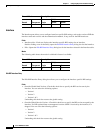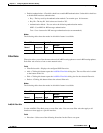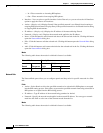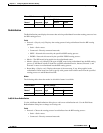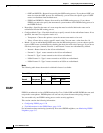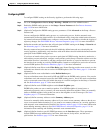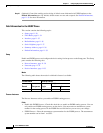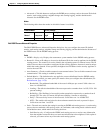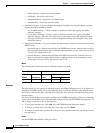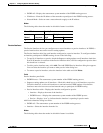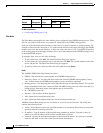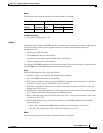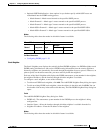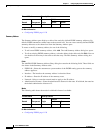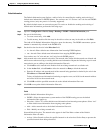
11-32
Cisco ASDM User Guide
OL-16647-01
Chapter 11 Configuring Dynamic And Static Routing
Dynamic Routing
–
Stub Connected—Advertises connected routes.
–
Stub Static—Advertises static routes.
–
Stub Redistributed—Advertises redistributed routes.
–
Stub Summary—Advertises summary routes.
• Adjacency Changes—Lets you configure the logging of neighbor warning and change messages.
Logging for both is enabled by default.
–
Log Neighbor Changes—Check to enable or uncheck to disable the logging of neighbor
adjacency changes.
–
Log Neighbor Warnings—Check to enable or uncheck to disable the logging of neighbor
adjacency changes. Enter the time interval (in seconds) between repeated neighbor warning
messages. Valid values are from 1 to 65535. Repeated warnings are not logged if they occur
during this interval.
• Administrative Distance—Lets you configure the administrative distances for internal and external
EIGRP routes.
–
Internal Distance—Administrative distance for EIGRP internal routes. Internal routes are those
that are learned from another entity within the same autonomous system. Valid values are from
1 to 255. The default value is 90.
–
External Distance—Administrative distance for EIGRP external routes. External routes are
those for which the best path is learned from a neighbor external to the autonomous system.
Valid values are from 1 to 255. The default value is 170.
Modes
The following table shows the modes in which this feature is available:
Networks
The Network tab lets you specify the networks used by the EIGRP routing process. For an interface to
participate in EIGRP routing, it must fall within the range of addresses defined by the network entries.
For directly connected and static networks to be advertised, they must also fall within the range of the
network entries.
The Network table displays the networks configure for the EIGRP routing process. Each row of the table
displays the network address and associated mask configure for the specified EIGRP routing process. To
add or change a network, do one of the following:
• To add a new network entry, click Add. The Add EIGRP Network dialog box appears.
• To remove a network entry, select the entry in the table and click Delete.
• To change a network entry, you must first remove the entry and then add a new one. You cannot edit
existing entries.
Fields
The Add EIGRP Network Entry dialog box fields:
Firewall Mode Security Context
Routed Transparent Single
Multiple
Context System
• — • ——



